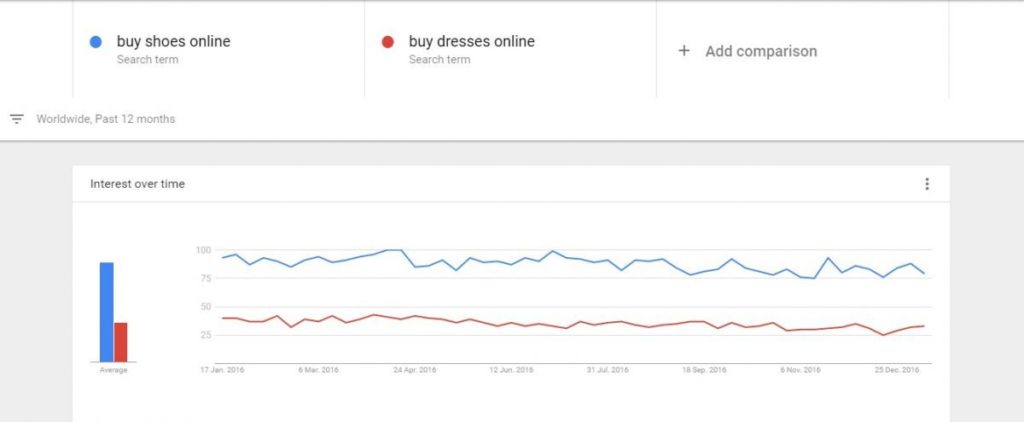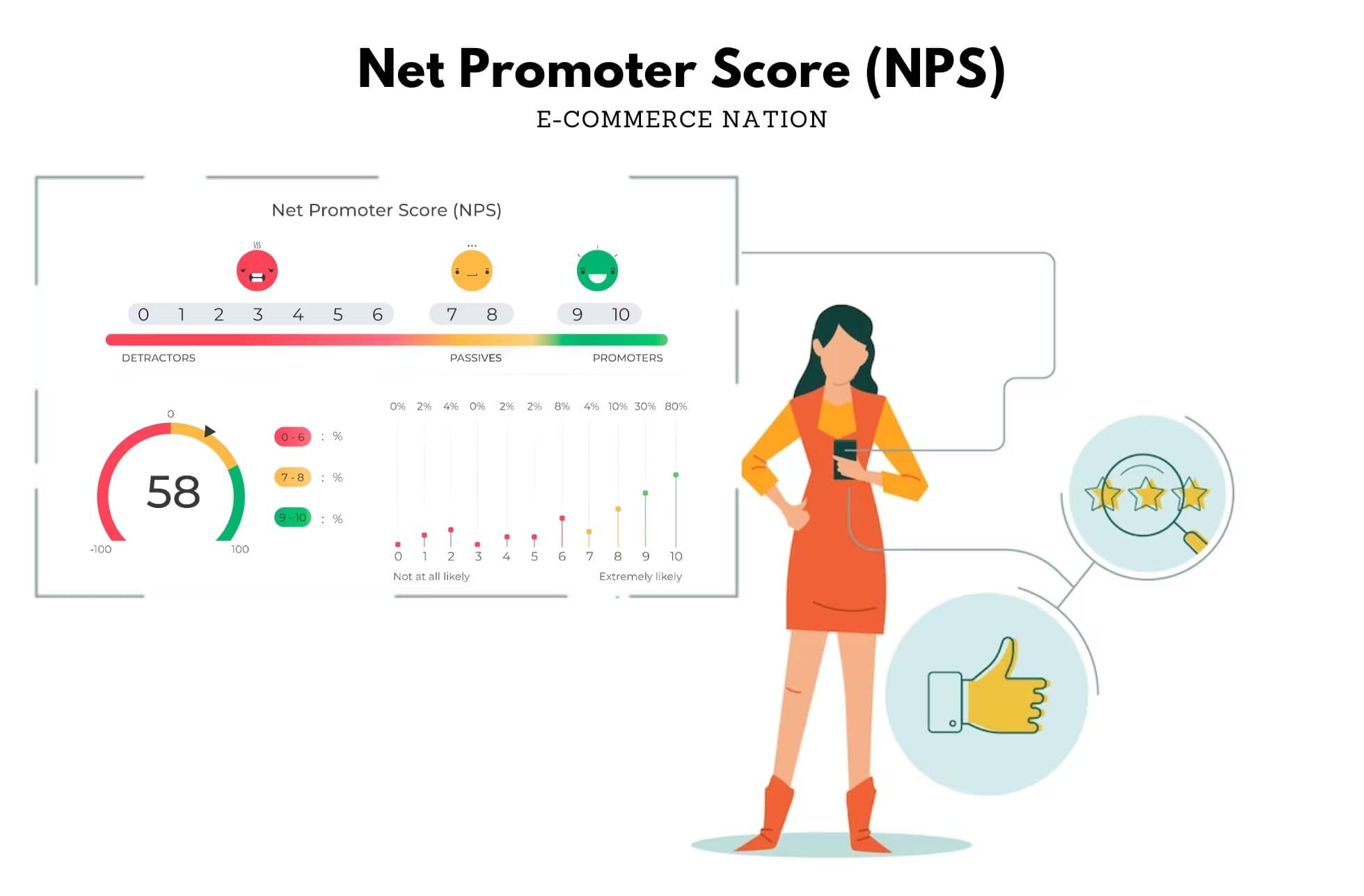
When I was about to write this article, I wanted to know how many people are actually interested in online shopping or would consider even searching for it. I did a quick search exercise on Google Trends and observed that the search terms “buy shoes online” and “buy dresses online” have constant peaks for the past year which generates an idea that people consistently look for buying online.
Why is it that these terms are constantly popular? Because, e-commerce has brought a revolution in the shopping industry. It has drastically changed the buying behavior of consumers. Which is why there is a spike in the number of e-commerce businesses launching on the market.
As per Statista, global e-retail sales projections show a growth of up to 1.5 trillion U.S. dollars by 2018.
But as fast as the number of businesses or startups in e-commerce are growing, their success rate is also plunging at the same rate. While consumers are moving to online shopping, the conversion rate is as less as 3% with 97.1% ultimately not buying at online stores. Due to this, almost 90% of the e-commerce startups fail within the initial months of operation.
What are the reasons for this high bounce rate which is eventually leading to businesses to bankruptcy? I have my own personal list of the basic blunders that e-commerce businesses tend to make, and is based on our interaction we have with our prospective clients:
1. Neglecting Financial Feasibility
An average online e-commerce store needs between $5000-$10000 to be competitive. Most businesses do not plan and foresee this amount of financial investment that is needed in every e-commerce model. Be it B2B or B2C, every model has it’s own set of metrics that are essential to analyse.
Neglecting the initial costs, operational costs, shipping overheads, resource & technology costs can lead to a situation where your store is incurring a net loss.
It is important that cash keeps flowing in and out. And if there isn’t enough cash flow, your operations will be hampered. For instance, most stores have large amounts of funding, but limit themselves when it comes to spending on basic healthy SEO strategies to boost their online discoverability.
Though many stores run on the drop-shipping ideas, but considering the fact that there are thousands of other brands running on the same model, you would be up against some of the major players out there like the Amazon and Walmart. Suprisingly, we can see how one of the fastest growing Amazon’s competition startup Jet was acquired by Walmart for a whopping $3.3 billion. The numbers say it all.
2. Not knowing your Ideal Audience
Failing to research your product niche and customer persona is a common e-commerce blunder made in the rush of launching in the industry. Additionally, choosing a product where the market is already saturated won’t do you any favors.
There is a deep web of niches- ‘a niche within a niche.’ Target the one that suits you the best. Even if you had a look at the analytics and are well aware of your product line, your customer mapping plays the most important role. If you don’t know how many would buy from you, what are their interests and when is it likely that they would buy from your store, you are just hitting the wrong bulls’ eye!
3. Choosing the Wrong Platform
There is a multitude of open source technology platforms for e-commerce to choose from. However, most businesses fail to examine the best one for their functional requirements.
Compromising technology in lieu of reducing the overall costs is a big no-no. Quality should be your brand motive and it all starts from the very foundation. A mismanaged platform supporting minimum features and not flexible to be scaled up in the future is a waste, both of your development time and your resources.
For instance, one transaction error from your store cart due to technical reasons can make you bear the brunt of angry customers and leave you with negative reviews and ratings. Apart from this, there are several other tech issues that businesses have to deal with anyway. But if it is recurring, it’s an alarming situation.
4. Overdoing the Design Interface
Design is a process, it’s a theory that drives emotions and actionability on your website. Complex features, too many add-ons, pop -ups here and there on your online store decrease it’s usability. An overly cluttered page, with bad graphics are just too much to handle.
Some web stores don’t allow guest checkouts and leave the customer annoyed by forced sign ups. Smashing magazine reported around 24% stores do not offer guest checkouts which is mainly the reason customers bounce back.
5. Having an Unplanned Content/SEO Strategy
Most businesses are tripping down the ladder due to a failed content plan and under-utilized SEO practices. Don’t have a SEO content strategy? If you don’t manage it, it’s time for you to get started. But first, you should know the latest trends in this domain and factor them.
No SEO = No Visibility
SEO forms an important part of your lead capturing process. Organic searches lead to 92% of the traffic to your online business. Ruling this out is a big blunder many startups and other retail businesses make. If you have a budget for paid google campaigns to boost your sales, then you can always incorporate it in your SEM strategy.
High quality content = High traffic
That’s the success mantra today; misleading information can lead to bad reviews. Your product descriptions represent you and what you have to offer. Your product copy should compel the user to buy. Search engines know if you are spamming with irrelevant content and links. Clear and concise information strengthens your brand and the relevancy of your product.
If you don’t have a proper content plan and a strategy to implement it, then you are missing out on the traffic and engagement on your products.
6. Having Undisclosed Shipping Methods
Majority of businesses fail due to undisclosed or unclear shipping policies. Along with this, it is hard to justify that you offer only a single mode of shipment. It is always preferable to offer a variety of choices.
Expensive shipping rates and taxes unknown to the customers increase the chances of cart abandonment. If you don’t offer free shipping, you would be losing a potential customer. Stores that offer free shipping services and on-time delivery are reported to have a higher rate of customer retention.
7. Being Stingy with Giveaways and Offers
People love incentives, offers and giveaways. If your store has nothing interesting to offer, chances are that your customers will loose interest in buying from you. Poor marketing and a weak value proposition makes no sense. Consequently, your store would be left with new value.
James Cash Penney, Founder J.C. Penney Stores said, “Every great business is built on friendship”.
Building a strong relationship with your customer is the key to every business. Discounts and offers show your customers that you appreciate them and bring you more return on a long-term basis.
8. Not Being Present on Mobile/Not having Mobile Payments
Certain e-commerce platforms have a strong web presence but haven’t really adapted to mobile. According to Business Insider, in the Q.2 of 2015 U.S. adults spent 59% of their time on mobile but just 15% of them converted. This is mainly because e-commerce sites are not mobile optimized. Losing that 44% of the traffic through mobile is a blunder most e-commerce stores are failing to realise.
Apart from mobile usability, certain online stores don’t provide easy payment methods, which is another major cause of losing out a large amount of business. With cashless transactions on the rise, e-commerce providers should monopolize in this area and provide their customers easy mobile wallets and other transaction methods.
9. Compromising the quality of service
Researchers state that customer satisfaction and sustainability in e-commerce is largely dependent on the quality of services. However, most businesses fail to impress the customers with unbeatable service and an exceptional support system.
Hence, they also miss out on a substantial word-of-mouth reference and may have to accept criticism through various channels including the social media in return. Give value to your customer. This is the golden aspect of this business or any business for that matter.
10. No performance measuring
Until and unless your goals are not measured, you will never seem to realise where is your business going. This is also one of the common blunders ecommerce stores make. It is essential to measure and compare performance metrics. Stores which are not doing this are wasting their biggest resource – Data.
Measure the data you have. This acts as a driver to perform better in the upcoming quarters in case the sales are running low.
In my personal opinion, you should not underestimate your competition. Keep a track on what they have to offer and how well are they doing for the same products that you sell.
Starting your own e-commerce business means being a master of each aspect from the beginning. It’s okay to get it wrong at first, as long as you learn and correct the mistakes along the way. Considering the number of businesses failing every day, each tipping point needs attention here to avoid these common blunders.





